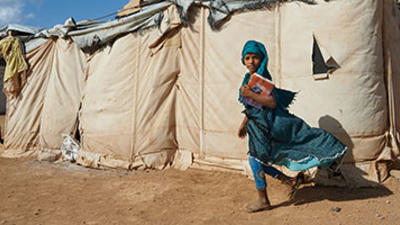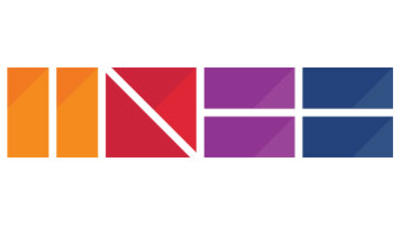Resources
Request support on coordination, information management, capacity development or other education in emergencies areas.
Demande de soutien en coordination, gestion de l’information, développement des capacités et autres domaines de l'éducation en situation d'urgence.
لطلب الدعم في مجال التنسيق ، إدارة المعلومات ، تنمية القدرات أو في اي مجال من مجالات التعليم في مناطق الطوارئ
Solicitar apoyo en coordinación, gestión de la información, desarrollo de capacidades u otra áreas en educación en emergencias.
Featured Resources
below you can find selected tools

COVID-19 Resources
View resources to support education in emergencies coordination during the COVID-19 pandemic.

Guidance on Education Cluster Co-Leadership Arrangements at the Country Level
Indicative Guidance for the establishment and management of co-leadership arrangements at the country level.

Inter-agency Network for Education in Emergencies
For technical education in emergencies resources, please visit the INEE website.
Guide to Education in Emergencies Needs Assessments
The purpose of the Guide and Needs Assessment Packages to provide practical, relevant guidance and resources to education in emergencies (EiE) coordination staff conducting, coordinating and participating in secondary data reviews and joint, harmonized and/or multi-sector needs assessments.
- Coordination: Needs Assessment, Inter-Sector Coordination
- HPC: Needs Assessment & Analysis
- Technical Areas: Accountability to Affected Populaiton, Localisation
Guidance on Working with Governments
How can a Cluster promote partnership with (sub-)national governments?Close coordination and collaboration with government efforts in a humanitarian response is an essential part of the cluster approach. The nature of these links will depend on the emergency context and the willingness, capacity…
- Coordination: Coordination, Cluster Management, Leadership
- HPC: Implementation & Monitoring, Needs Assessment & Analysis, Operational Peer Review and Evaluation, Resource Mobilisation, Strategic Planning
Guidance on Cluster Leadership for Save the Children Country Offices: The Benefits, the Role and the Responsibilities
As a Cluster Lead Agency (CLA), Save the Children is inherently responsible for the effective establishment, management and sustained global and national support of the Education Cluster. The following document outlines the benefits to SC as well as the responsibilities of the Country Director (CD…
- Coordination: Coordination, Cluster Management, Leadership
- HPC: Implementation & Monitoring, Needs Assessment & Analysis, Operational Peer Review and Evaluation, Resource Mobilisation, Strategic Planning
- Technical Areas: Accountability to Affected Populaiton
- Coordination: Coordination, Leadership
- HPC: Implementation & Monitoring, Needs Assessment & Analysis, Operational Peer Review and Evaluation, Resource Mobilisation, Strategic Planning, Coordination
Cluster Coordination Guidance for Country Offices
This document has been developed to assist UNICEF country offices to better fulfil CLA responsibilities in level 3 (L3) and other emergencies, with reference to relevant IASC protocols and guidance and relevant internal UNICEF reviews and evaluations.9 This document should be used in conjunction…
- Coordination: Coordination, Leadership
- HPC: Implementation & Monitoring, Needs Assessment & Analysis, Operational Peer Review and Evaluation, Resource Mobilisation, Strategic Planning
- Technical Areas: Accountability to Affected Populaiton
The Short Guide to Rapid Joint Education Needs Assessments
The Short Guide is a stand-alone reference tool to help you plan and conduct a rapid joint needs assessment. You can also use it in situations where there are no clusters and education is coordinated through a sector working group.
- Coordination: Needs Assessment, Inter-Sector Coordination
- HPC: Needs Assessment & Analysis
Joint Education Needs Assessment Toolkit
This toolkit provides robust guidance for conducting joint needs assessments in the first weeks and months of an emergency. This toolkit is divided into four parts: I) guidance; II) modules; III) tools; and IV) annexes. This toolkit accompanies RJENA
- Coordination: Needs Assessment, Inter-Sector Coordination
- HPC: Needs Assessment & Analysis
Education Cluster Coordinator Handbook
The purpose of this handbook is to provide Education Cluster Coordinators with supporting information to guide their role in facilitating a predictable, coordinated and effective response to education needs in emergencies.
- Coordination: Coordination, Cluster Management, Inter-Sector Coordination, Leadership
- HPC: Implementation & Monitoring, Needs Assessment & Analysis, Operational Peer Review and Evaluation, Resource Mobilisation, Strategic Planning, Coordination
- Technical Areas: Accountability to Affected Populaiton
Filter results
Coordination(selected )
Country(selected )
Humanitarian Programme Cycle(selected )
Language(selected )
Publication Date(selected )
Publisher(selected )
Resource Type(selected )
Technical Areas(selected )
Can’t find what you’re looking for?
Contact your relevant language Help Desk








